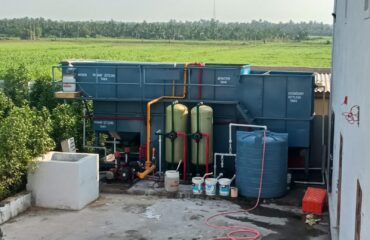In the evolving landscape of urbanization and industrialization, the effective management of wastewater has taken center stage. The Effluent Treatment Plant (ETP) emerges as a vital solution to address the challenges posed by industrial expansion, particularly in locales like Gandhinagar.
Understanding Effluent Treatment Plant (ETP)
An Effluent Treatment Plant, commonly referred to as an ETP, is a sophisticated facility designed to treat and purify industrial wastewater before its release into the environment. The primary objective of an ETP is to remove contaminants and pollutants from the wastewater, ensuring compliance with stringent environmental standards and minimizing ecological impact.
The Role of ETPs in Gandhinagar
Managing Industrial Wastewater
Gandhinagar, known for its industrial activities, faces the challenge of managing the substantial volume of wastewater generated by its diverse industries. The Effluent Treatment Plant in Gandhinagar plays a pivotal role in treating this wastewater, thereby reducing its adverse impact on the environment.
Promoting Environmental Resilience
By eliminating pollutants from industrial wastewater, the ETP in Gandhinagar significantly contributes to the preservation of local water bodies, maintenance of soil quality, and enhancement of air quality. This role assumes heightened significance in urban areas like Gandhinagar, where striking a balance between industrial growth and environmental preservation is crucial.
Components of an Effluent Treatment Plant
Pre-Treatment
The treatment process commences with pre-treatment, wherein larger solid particles and debris are separated from the wastewater. This preliminary stage prevents damage to subsequent equipment and ensures the efficiency of subsequent treatment processes.
Primary Treatment
The primary treatment phase employs physical processes such as sedimentation and flotation to separate suspended solids from the wastewater. This step effectively reduces the organic load present in the water.
Secondary Treatment
The secondary treatment phase involves biological processes. Microorganisms facilitate the breakdown of organic matter and pollutants present in the wastewater, resulting in further purification.
Tertiary Treatment
The tertiary treatment stage incorporates advanced techniques such as chemical coagulation, filtration, and disinfection. These methods elevate the quality of the treated water, often rendering it suitable for non-potable applications.
Advantages of an ETP
Pollution Mitigation
The primary advantage of an ETP lies in its ability to mitigate pollution. By treating industrial wastewater prior to discharge, these plants prevent the contamination of water bodies and soil, thereby contributing to environmental conservation.
Compliance with Regulations
Industries operating ETPs demonstrate their commitment to environmental regulations, not only avoiding legal penalties but also enhancing their reputation as responsible and sustainable entities.
Future Prospects and Sustainability
Technological Advancements
As technology evolves, ETPs can integrate innovative solutions to enhance the efficiency and efficacy of the treatment process, ensuring superior wastewater treatment outcomes.
Promoting Public Awareness
Raising awareness among industries and the general public about the importance of ETPs can garner increased support for their implementation and proper operation.
Conclusion
The Effluent Treatment Plant in Gandhinagar stands as a testament to the city’s dedication to harmonizing industrial growth with environmental stewardship. Through effective wastewater treatment and pollution reduction, this plant plays a pivotal role in shaping a cleaner and healthier future for Gandhinagar. As the city progresses, the adoption of advanced ETP technologies and heightened public awareness will be instrumental in creating a sustainable and vibrant urban environment.





